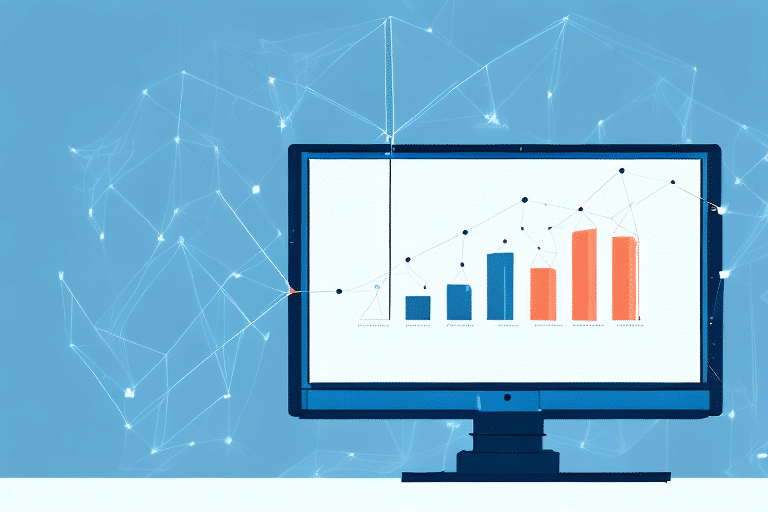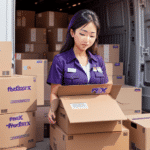How to Connect, Optimize, and Manage LSO for SPS Commerce Fulfillment
If you're working with SPS Commerce Fulfillment, it's essential to understand the role of LSO – Logistic Service Optimization – in the process. LSO utilizes a system of algorithms and rules to optimize the routing, consolidation, and scheduling of transportation, ultimately enhancing the efficiency and effectiveness of SPS Commerce Fulfillment. This article explores the importance of LSO in SPS Commerce Fulfillment, the benefits of connecting and optimizing LSO, step-by-step guidance on connecting and optimizing LSO, tips for managing LSO, challenges of LSO implementation and strategies to overcome them, best practices for LSO integration, and future trends in LSO.
Understanding the Importance of LSO in SPS Commerce Fulfillment
Grasping the significance of LSO is crucial before delving into its benefits and the steps required for its connection and optimization. LSO enables SPS Commerce Fulfillment to balance transportation costs against delivery speed effectively. It ensures shipments are consolidated and routed in the most efficient manner, adhering to the most optimal schedule. Proper implementation of LSO reduces lead times and transportation costs, allowing for faster delivery times and improved cost-effectiveness.
Additionally, LSO provides real-time visibility into the status of shipments, allowing customers to track their orders from shipment to delivery. This transparency not only enhances customer satisfaction but also aids in identifying potential issues or delays in the delivery process. With such insights, SPS Commerce Fulfillment can take proactive measures to resolve issues, ensuring that shipments are delivered on time and in good condition.
According to a report by the Forbes Technology Council, implementing advanced LSO can reduce transportation costs by up to 15% while increasing delivery speed by 20%.
Benefits of Connecting and Optimizing LSO for SPS Commerce Fulfillment
Connecting and optimizing LSO offers significant advantages:
- Improved Transportation Costs: LSO creates efficient routes that save on transportation expenses.
- Minimized Lead Times: Optimization reduces delivery times, enabling faster and more reliable service.
- Enhanced Supply Chain Visibility: Greater transparency reduces the likelihood of delays and improves overall efficiency.
- Better Inventory Management: Efficient delivery networks reduce the need for excessive inventory, lowering storage costs and minimizing overstock risks.
- Enhanced Customer Service: Faster and more reliable deliveries improve customer satisfaction and loyalty. Accurate delivery estimates and better communication further enhance the customer experience.
Moreover, studies from Logistics Management indicate that optimized LSO can enhance customer retention rates by up to 10% due to improved delivery performance.
Step-by-Step Guide to Connecting LSO for SPS Commerce Fulfillment
The process of connecting and optimizing LSO is relatively straightforward but requires attention to detail. Follow these steps to ensure a successful implementation:
- Verify System Compatibility: Ensure your warehouse management system (WMS) or order management system (OMS) supports LSO. If not, consider possible upgrades, modules, or technology partnerships to enable this functionality.
- Share Business Logic and Routing Preferences: Communicate your business logic and routing preferences with your LSO provider to tailor the optimization process to your specific needs.
- Configure and Test Routes: The LSO provider will configure and test the routes and consolidations with selected carriers to verify shipping costs and lead times.
- Establish Business Rules: Collaborate with the LSO provider to set business rules for LSO optimization, including factors such as expedited shipping, appointment requests, and home delivery requirements.
- Integrate with WMS and OMS: The LSO provider will integrate with your WMS and OMS systems to automate routing, consolidation, and scheduling, ensuring compliance with the established rules.
Implementing these steps systematically ensures a smooth integration of LSO into your fulfillment process, leading to cost savings and enhanced efficiency.
Regularly reviewing and optimizing your LSO strategy is vital to maintain alignment with evolving business needs. This may involve analyzing shipping data, adjusting business rules, or exploring new carrier partnerships to maximize the benefits of LSO.
How to Optimize LSO for Improved SPS Commerce Fulfillment Performance
Optimizing LSO involves establishing a proactive feedback loop:
- Data Collection and Analysis: Gather and analyze data related to transportation and delivery processes to make informed, data-driven decisions.
- Automation of Processes: Implement automation for steps like groupage or cross-docking to enhance efficiency.
- Optimize Carrier Contracts: Modify carrier contracts and agreements based on performance data to improve service quality and cost efficiency.
Incorporating advanced technologies such as Transportation Management Systems (TMS) can streamline processes and provide real-time visibility into shipments. Additionally, utilizing Electronic Data Interchange (EDI) improves communication and reduces errors between trading partners, further enhancing the optimization of your LSO strategy.
Tips for Managing LSO in SPS Commerce Fulfillment Processes
Managing LSO effectively involves several strategies:
- Maintain Open Communication: Foster clear communication with LSO providers and within your organization to ensure everyone understands the relevant rules and processes, facilitating quick identification and resolution of potential issues.
- Regular Performance Reviews: Consistently monitor LSO performance to identify optimization opportunities and ensure compliance with business rules and carrier agreements.
- Employee Training and Education: Regularly train employees on LSO processes and procedures to ensure they are knowledgeable and capable of identifying and addressing potential issues proactively.
- Contingency Planning: Develop contingency plans for disruptions or delays in LSO services, such as having alternative carriers or shipping methods available.
Implementing these strategies ensures effective management of LSO in your fulfillment processes, resulting in a smooth and efficient operation that meets customer expectations.
Common Challenges of Implementing LSO in SPS Commerce Fulfillment and How to Overcome Them
System Compatibility Issues
One common challenge is ensuring that existing systems are compatible with LSO. Overcome this by investing in compatible systems, managing data quality, and establishing standardized rules and processes.
Data Quality Management
Inadequate or incorrect data sets can hinder LSO implementation. To address this, implement robust data management practices to ensure the accuracy and completeness of data used by the LSO system.
Lack of Cooperation and Communication
Effective communication between stakeholders and cooperation with LSO providers are critical. Establish strong communication channels and collaborative processes to facilitate seamless implementation.
Understanding of Technology
A lack of understanding of LSO capabilities can lead to underutilization. Provide comprehensive training and education to stakeholders to maximize the potential of the LSO system.
Resistance to Change
Employees accustomed to traditional fulfillment methods may resist adopting new LSO systems. Involve employees in the implementation process, offer training and support, and clearly communicate the benefits to encourage adoption and utilization.
Best Practices for Integrating LSO with Other Technologies in SPS Commerce Fulfillment
Integrating LSO with other technologies is crucial for maximizing efficiency. Here are best practices to ensure successful integration:
- Standardized Data Formats: Use standardized data formats to ensure seamless integration between LSO and other technologies.
- Effective Data Management: Implement robust data management practices to maintain data integrity across all integrated systems.
- Open Communication: Foster open communication channels between different technology systems to facilitate smooth data flow and integration.
- Compliance with Regulations: Ensure all integrated systems comply with industry regulations and data privacy requirements.
- Scalability and Flexibility: Design systems to be scalable and flexible to accommodate future growth and changing business needs.
- Dedicated Integration Team: Establish a dedicated team responsible for managing and maintaining the integration between LSO and other technologies, ensuring quick troubleshooting and resolution of any issues.
Adhering to these best practices will ensure that LSO integration with other technologies enhances your fulfillment operations without causing disruptions.
How LSO Can Help Streamline Your SPS Commerce Fulfillment Operations
Implementing LSO can significantly streamline SPS Commerce Fulfillment operations by:
- Automating Routing, Consolidation, and Scheduling: LSO automates key processes, reducing lead times and lowering transportation costs.
- Ensuring Compliance: Adheres to business rules and carrier agreements, enhancing delivery performance.
- Improving Delivery Times: Faster deliveries boost customer satisfaction and loyalty.
- Enhancing Visibility: Real-time tracking and monitoring allow proactive management of shipments and keeping customers informed.
- Providing Customized Reporting and Analytics: Gain valuable insights into shipping operations to identify further optimization and cost-saving opportunities.
According to a study by McKinsey & Company, companies utilizing advanced LSO strategies have seen up to a 20% improvement in supply chain efficiency.
Future Trends in LSO and Their Impact on SPS Commerce Fulfillment
Looking ahead, several trends are shaping the future of LSO:
Integration with the Internet of Things (IoT)
The integration of IoT with LSO will enhance real-time tracking and monitoring, leading to more accurate delivery times and a reduction in missing or misplaced shipments.
Artificial Intelligence and Machine Learning
AI and machine learning will play pivotal roles in optimizing delivery routes, predicting demand, and improving inventory management. These technologies will enable more dynamic and responsive LSO systems.
Rise of E-commerce and New Delivery Methods
The continued growth of e-commerce will drive demand for faster delivery times, prompting innovations in LSO such as the use of drones and autonomous vehicles to meet these expectations.
Integration with Other Systems
Future LSO systems will integrate more fully with warehouse management and inventory management systems, further streamlining supply chains and increasing overall efficiency.
These trends will significantly impact SPS Commerce Fulfillment by driving greater efficiency, reducing costs, and enhancing the customer experience.
Conclusion
LSO is a critical component of SPS Commerce Fulfillment, and businesses that prioritize the optimization and management of their LSO can reap substantial benefits. By following the steps and best practices outlined in this article, businesses can optimize LSO, enhance performance, and streamline their fulfillment operations. Ongoing monitoring, regular review and adjustment of rules and processes, and maintaining open communication with LSO providers and stakeholders are essential to ensuring optimal performance and continued success.






















